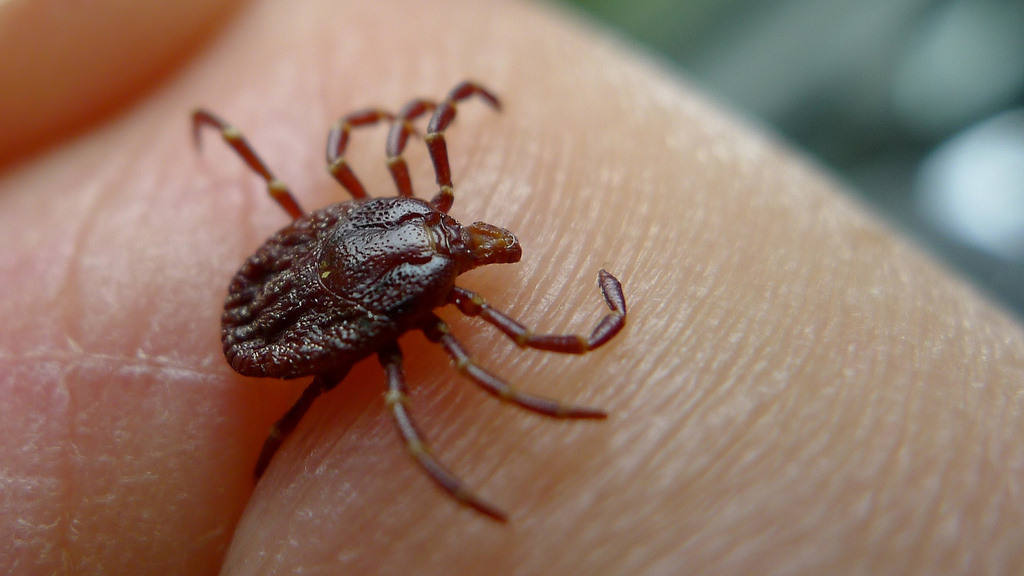Ticks
What they do: Ticks are small arachnids that require blood meals for many aspects of their complex life cycle. Larvae measure about 1/32 of an inch, nymphs about 1/16-1/8 of an inch, and adults 3/16-1/4 of an inch. Ticks move using their legs and during the nymph or adult phases will attach to several different kinds of animals for blood, including humans.
Tick bites are usually painless, even when the tick falls off the skin. A couple hours later, the bite area may develop itching, burning, redness, and rarely pain. However, the majority of people don’t develop any symptoms. Individuals who are allergic to ticks might develop a rash or suffer from shortness of breath, swelling, numbness, or paralysis. As mentioned, they can carry serious diseases, like Lyme.
What to do: To avoid contact with ticks, you should avoid moist and humid areas in or near wooded or grassy areas where they are commonly found. You can also put products that contain permethrin, a synthetic chemical that kill ticks, on boots, clothing, and camping gear. On your skin, use a repellent with DEET. After coming indoors from being in an environment that ticks would likely inhabit, always check your clothing and body for ticks. If you happen to find a tick on yourself, remove the tick with tweezers and watch for signs of illness in the coming days since they are known to carry diseases. If you become ill, seek medical attention.





